This is the first in a four part series about building your own blog or website using Hostgator and WordPress. Each of the four parts of the series is linked below, so you can skip to the one that is most relevant to your current needs.
- Part 1 – Getting a domain name (this article)
- Part 2 – Setting up a hosting account
- Part 3 – Changing name servers
- Part 4 – Installing WordPress
Starting your own website is easier now than it has ever been. Whether you have a business that needs a website, or you have a hobby or idea that you would like to blog about, the first step that you need to take is purchasing a domain name.
The domain name for your website is what people will type into the address bar, or search for in Google, to find your website. For example, the domain name of this website is solveyourtech.com. Ideally you will want to pick a domain name that makes it easy for readers to identify your site. For example, if your name is Michelle and you have a bakery called “Michelle’s Awesome Bakery”, then you might want a domain name like michellesawesomebakery.com.
There are many places where you can buy a domain name but, if you are just getting started, then the easiest way to do it is to buy your domain name and hosting from the same place. (The hosting is where the files for your website will be located, which we will set up in the next article.) Centralizing your domain name and hosting removes a lot of the headaches and problems that people can run into when they are setting up a site, as hosting providers have typically streamlined their process to accommodate sites for which they are the domain name registrar.
For this reason, we recommend getting your domain name from Hostgator, then using them as your hosting provider as well. We will show you how to buy a domain name from Hostgator in the steps below.
You can go to hostgator.com to search for domains and see what is available.
How to Register and Buy a New Domain Name from Hostgator.com
Things you will need to complete these steps:
- A couple of ideas for a domain name. Your first choice might not be available, so you are going to need a backup. Click here to check domain name availability.
- A credit card.
Step 1: If you haven’t already done so, head on over to Hostgator’s domain search page.
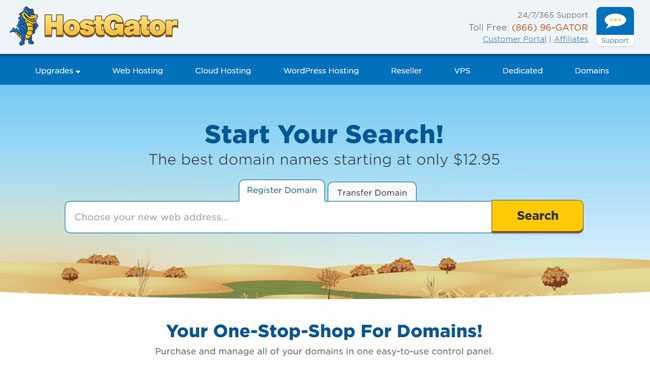
Step 2: Type the domain name that you want for your website into the search field at the center of the screen, then click the Search button.
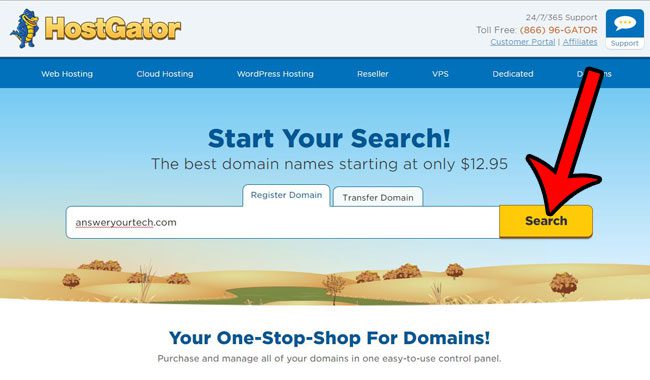
Step 3: If your name is available, it will be added to the cart automatically. If not, you can choose from one of the other options given, or you can start another search.
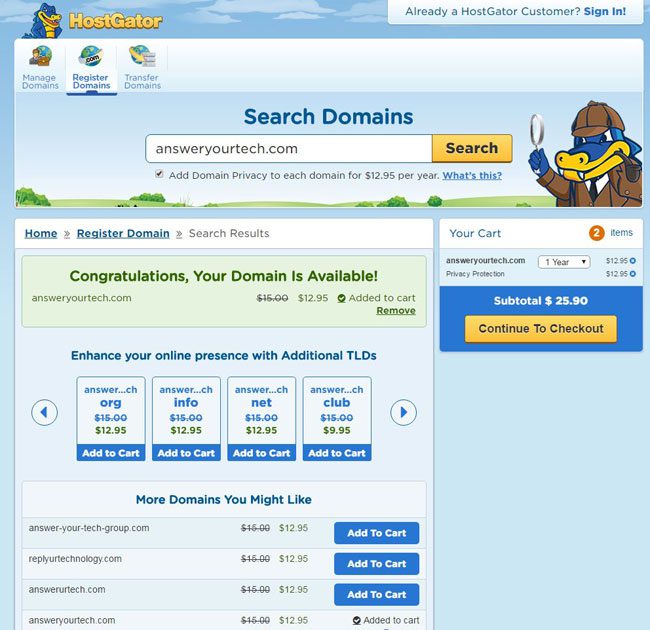
Step 4: Decide if you want to have privacy protection on your domain name or not. When you register a domain name you will need to provide identifying information about yourself, which is then used to create a WHOIS record for the website. However, if you elect to use privacy protection, your information is not available to the general public. I personally prefer to use privacy protection on my websites, but you can click the x to the right of Privacy Protection in the cart if you would like to use your personal information and save some money. You can then click the Continue to Checkout button to continue.
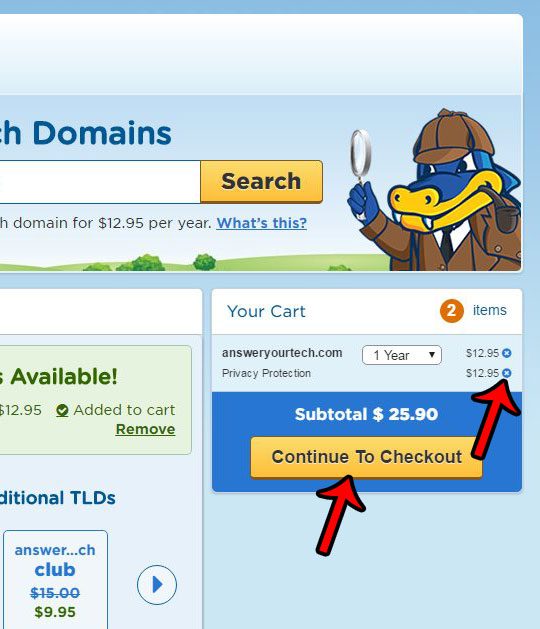
Step 5: Enter your email address under Create an Account, then create a password and PIN code. Click the Continue button when you are done.
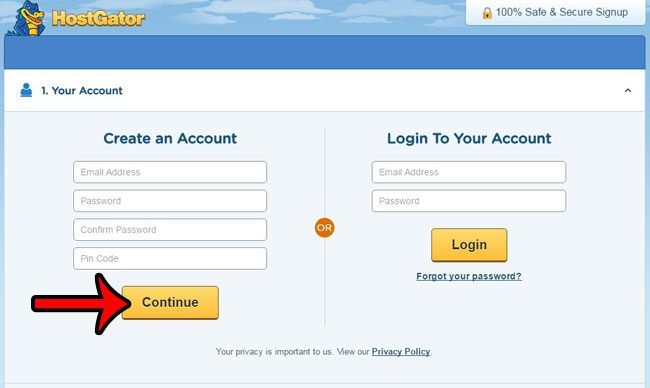
Step 6: Make sure that the information in the cart is correct, then click the Continue to Checkout button.
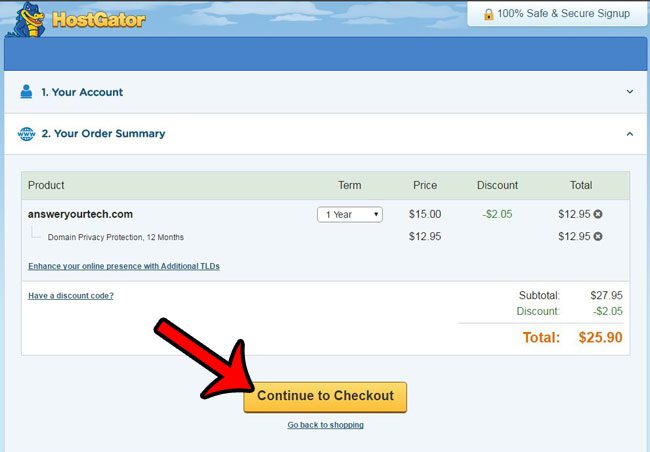
Step 7: Enter your billing and credit card information, check the box to the left of I have read and agree to Hostgator’s Terms of Service, then click the Place Your Order button.
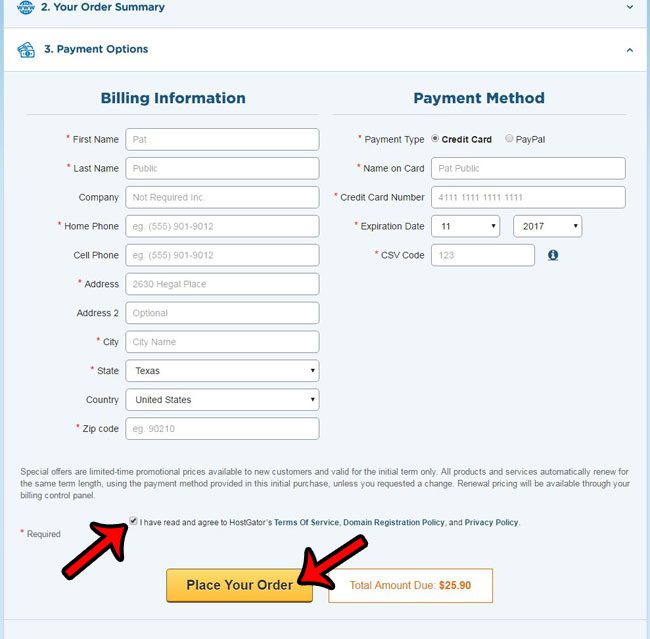
Congratulations! You now own a website domain. We will continue setting up our website by creating a Web hosting account with Hostgator in the next article. Click here to go to that article and continue the process.
Try Hostgator for $0.01Some of the links in this article are affiliate links. This means that, should you choose to make a purchase from Hostgator, we will receive a commission for that purchase.

Matthew Burleigh has been writing tech tutorials since 2008. His writing has appeared on dozens of different websites and been read over 50 million times.
After receiving his Bachelor’s and Master’s degrees in Computer Science he spent several years working in IT management for small businesses. However, he now works full time writing content online and creating websites.
His main writing topics include iPhones, Microsoft Office, Google Apps, Android, and Photoshop, but he has also written about many other tech topics as well.